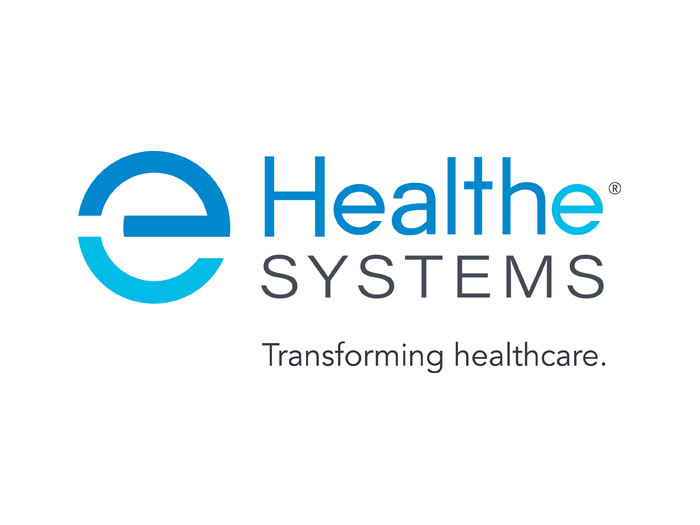How Businesses Can Strengthen Their Cyber Defenses for 2025 and Beyond

Insureds are likely relieved that cyber insurance rates have stabilized since 2021 and 2022 when renewal price increases of 80%, 90%, or 100% were plausible. In the final quarter of 2024, rates only increased 0.2% to 1.6%, according to an S&P Global report.
This market stabilization is the result of insureds proactively adopting risk management tools to reduce their vulnerability to an attack. Ransomware, once a scourge for insureds, accounted for less than 20% of cyber claims in 2022 and 2023, according to a report from Marsh.
“There’s a trend toward larger, more sophisticated businesses being more on the ready with disaster recovery plans, business continuity plans, and incident response plans. They’re more likely to be able to restore their operations from backups,” said Patrick Thielen, global head of cyber at Liberty Mutual.
Companies are upping their defenses, but attackers are increasing their sophistication, too. Double extortion, artificial intelligence and other strategies are helping hackers break into company networks and steal vulnerable data.
“While many companies now have robust training around cyber security, they need to remain vigilant as new AI-enabled scams have become increasingly sophisticated and harder to detect,” said Melissa Carmichael, head of U.S. cyber at Beazley.
“Staying ahead of the constantly evolving privacy and data regulations will present additional challenges for companies in 2025.”
Two Cyber Attacks to Watch for in 2025
According to Thielen, cyber attacks can be split into two broad buckets: those that use automation and other tools to hit a broad number of targets and those that dive deep to penetrate a business’s system and cause extensive damage.
The first type of attack will be familiar to many insureds. For the last few years, ransomware attackers have employed a “spray and pray” approach, where they send out vast numbers of phishing and other kinds of attacks, to multiple different businesses, with the hopes that someone will fall for it and grant them access to a system they can hold hostage until their demands are paid.
“They’re finding human beings in moments of weakness, where maybe they’re in a hurry or they’re easily tricked into doing something,” Thielen said.
These attacks were successful for years because “once a company gets to a certain number of employees, it’s not a matter of if someone clicks on a link phishing, it’s a matter of when,” explained Justin Skvarce, AVP of cyber claims at Arch Insurance. Now, larger businesses have more sophisticated backups and defenses, so the spray and pray approach is largely being used by attackers targeting small- to medium-sized businesses who are more likely to have less sophisticated defenses.
The second kind of attack businesses are likely to see in 2025 are those from attackers who have decided they want to target larger, more sophisticated businesses with their ransomware demands. These hackers are anticipating better security and are developing more specific attacks.
They scour the web and do extensive research, at times even mentioning specific projects an employee might be working on, to make their phishing attempts more personalized. Once they have the data, they don’t rely on freezing the company’s operations — they know they have backups. Instead, they threaten to leak sensitive data and damage the company’s reputation in attacks known as double extortion.
“We’ve seen ransomware operations transform into highly organized enterprises,” said Shelley Ma, incident response lead at Coalition.
“Threat actors are taking their time. They’re not just thinking about who do we want to hit, but how do we want to hit them? What will be the most damaging hit?” added Gwenn Cujdik, North America incident response and cyber services lead, cyber, technology and media liability, AXA XL.
Attackers direct these types of highly researched, targeted attacks toward larger firms. “On the enterprise side, we see a sort of a different dynamic, where actors are spending more time and more energy digging deeper to get broader access within corporate networks. Their goal in doing that is essentially to try to inflict more severe pain on the part of the victim for the sake of having potentially larger economic gains on the other side,” Thielen said.
AI Equals More Sophisticated Attacks, Better Defenses
Artificial intelligence (AI) is one of the buzziest new technologies, so its natural businesses might be wondering how cyber criminals are using it to their advantage.“Threat actors are well funded, motivated and more sophisticated. They are also agile and adopt new technologies to maintain a lead over their target,” said Keith Savino, managing partner at Trucordia.
When people think of AI in cyber attacks, they often imagine dramatic scenarios where attackers are creating audio or video spoofs of a real person. That’s not necessarily realistic to worry about right now.
“Everybody knows about some of the more crazy deep fakes — folks that are on a zoom call, and the people that are on the call are all AI generated,” Cujdik said.
“I think that that’s something that is pretty rare, in part because the technology is expensive right now, and it’s also not sophisticated. Some attempts to use this are kind of laughable.”
What AI is doing is making it easier for attackers to send out many, many phishing emails. Those spray and pray attackers? They can now send out tons of AI generated emails. These emails have perfect grammar and are often more convincing than those written by the attackers themselves.
“AI allows attackers to generate 1,000s of unique and high quality phishing emails in seconds,” Ma said. “These AI generated emails can perfectly mirror someone’s writing style, or they can discuss a real project that’s being worked on.”
Studies have found that 40% of all phishing emails are now generated by AI and the Harvard Business Review found that 60% of people who receive an AI generated phishing email fall for it.
AI does have some benefits. It can help bolster cyber defenses. Companies are using it to detect suspicious emails and filter out those that could be dangerous.
“It’s interesting to see the two sides of artificial intelligence and how it’s being used. On the one hand, organizations are using it as a preventive tool to bolster their cyber defenses,” Rachel Lavender, U.S. and Canada cyber brokerage leader at Marsh, said.
“The flip side of that — and this is the conundrum for organizations — is that the criminals are also using artificial intelligence. Our clients have said they have significant concerns about the attackers using AI to find weaknesses and to write malicious code.”
Strengthening Your Cyber Defenses
As cyber threats abound, businesses need to make sure they are defending their networks against attacks. Using virtual private networks (VPN) and multi-factor authentication (MFA) is critical and many underwriters are requiring them for cyber policies.
VPNs and MFA are great, but most attackers are gaining access through employees, who might be vulnerable to believing a deceptive attacker. Employee training is key to protecting businesses from cyber exposures.
“We’re seeing more and more organizations promoting a culture of awareness and security all the way from the C-suite level,” said Jamie Schibuk, EVP of professional liability, Arch Insurance.
“I think we’ve seen some companies get more creative with their cybersecurity and awareness training where they’re handing out actual pamphlets in a physical form within an organization, creating contests around reporting phishing and things like that.”
Company culture can also make a difference, especially when it comes to getting employees to report potential breaches. Companies that are clear they aren’t punitive and that they prioritize cyber security will have better luck with employee reporting.
“Sometimes people are embarrassed or ashamed that they clicked on something that they shouldn’t have and don’t want to necessarily own up to the fact, but it’s vital that you let the appropriate people within your organization know,” Skvarce said.
A Strong Incident Response Plan
Even with strong defenses in place, insureds can’t protect themselves from every cyber attack. If a hacker gets into their system, they need a tested incident response plan to help regain control of their networks and minimize the damage.
“If you have a ransom demand and your systems are compromised, it’s going to be virtually impossible for you to prepare a response at that point,” said Tim Nunziata, senior vice president, head of cyber risk, management liability and specialty, Nationwide. “Make sure you’re working with your insurance carrier and broker to build out an appropriate incident response plan.”
Insurers play a critical role in ensuring businesses are prepared to respond to cyber attacks. Not only do they provide financial support, they have partnerships with security vendors and experts who can help businesses quickly recover. These tools are especially useful for smaller businesses.
“Small and medium-sized companies might not have their own IT security department, they might not have their own troubleshooter, so they tend to rely more on services that are offered by cyber insurance,” said Martin Kreuzer, senior risk manager, cyber risks, Munich Re.
Most attackers strike when they think business leaders will be less focused. Think: evenings and weekends, when people may have signed off and the network is being monitored less frequently. An incident response plan should account for that.
“We typically see threat actors be more active on networks when they believe that everyone’s kind of stepped away for the holidays, for the weekends and nights,” said Kyle Lutterman, VP, cybersecurity risk engineer, Arch Insurance.
Developing an incident response plan isn’t enough. Businesses also need to update it so it can be relied upon as the threat landscape shifts.
“Once a business has created an incident response plan tailored to that business, it is important to maintain the plan as an integral part of the business’ operations,” said Tony Dolce, head of professional liability, cyber and tech E&O, The Hartford.










